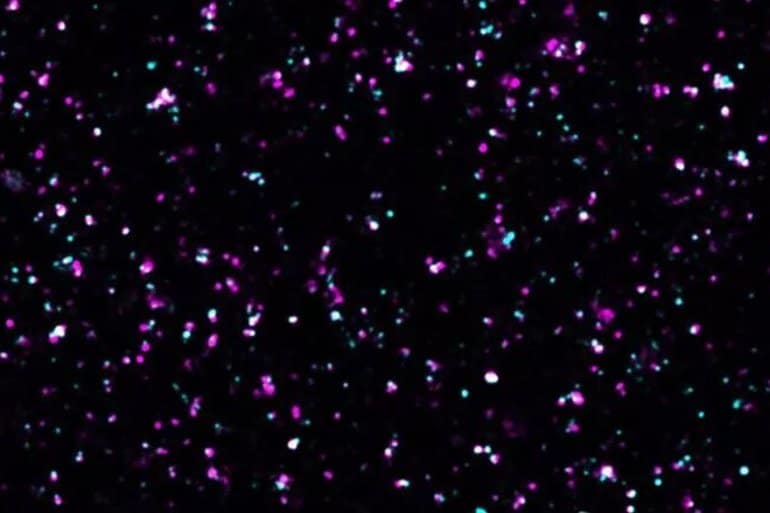Summary: Study reveals a signaling pathway that controls the formation of synapses between pyramidal neurons and inhibitory neurons expressing the parvalbumin protein.
Source: King’s College London
New research from the Institute of Psychiatry, Psychology & Neuroscience (IoPPN) at King’s College London has demonstrated that brain wiring requires the control of local protein synthesis at the level of specific synapse types.
In new research published in Science, a collaborative study between the Rico and Marín groups reported that the regulation of protein synthesis occurs in a highly specific manner, to the degree of the type of synapse involved.
The authors identified a signaling pathway controlling the formation of synapses between excitatory pyramidal cells and inhibitory interneurons expressing the protein parvalbumin.
This is the first study that demonstrates the presence of such specificity in the regulation of protein synthesis during brain wiring.
The cerebral cortex is the outer layer of the human brain’s largest part, the cerebrum. It is responsible for our most sophisticated and diverse behaviors through its control of motor and sensory functions. It is also one of the most complex biological systems, so understanding the mechanisms that control its development is a major scientific challenge.
There are two main types of neurons in the cerebral cortex: excitatory pyramidal cells and inhibitory interneurons. The interaction between each part is crucial for the normal function of the cerebral cortex. Inhibitory interneurons pace and synchronize the activity of excitatory neurons, thereby orchestrating their behavior.
Neurons in the cerebral cortex organize in networks wired by connections known as synapses. Like an electrical connection, synapses consist of pre- (power plug) and post-synaptic (socket) compartments. In the adult brain, protein synthesis occurs locally in both compartments to carry out the function of the neurons.
Controlling the synthesis of specific proteins, through chemical signaling, allows the brain to regulate the activities of individual synapses. How this regulation differs between two types of developing cerebral cortex neurons, however, was not fully understood.

“Exploring the molecular processes regulating the development of cortical connectivity is thrilling, especially when they end up being so specific. We identified a signaling pathway that controls protein synthesis in one of the most fundamental connections in the cerebral cortex, the synapses made by pyramidal cells on parvalbumin interneurons,” says Dr. Clémence Bernard, the first author of the study from King’s IoPPN.
Abnormal protein synthesis in synapses is a core mechanism underlying ASD. The mechanism identified in this paper reveals an interplay of proteins associated with neurodevelopmental disorders. This discovery supports the idea that the synapses made by excitatory pyramidal cells and the parvalbumin-positive interneurons might be particularly sensitive to dysregulation seen in developmental brain conditions such as ASD.
“It’s fascinating that many genes linked to ASD seem to be regulated by the same signaling pathway we have identified in this study,” says Professor Marín, one of the two senior authors of the study.
“This observation suggests that the connections between excitatory pyramidal cells and inhibitory interneurons expressing parvalbumin are a possible hot spot for multiple genetic risk factors in ASD,” says Professor Rico, co-senior author of the study.
About this neuroscience research news
Author: Press Office
Source: King’s College London
Contact: Press Office – King’s College London
Image: The image is credited to King’s College London
Original Research: Closed access.
“Cortical wiring by synapse type–specific control of local protein synthesis” by Clémence Bernard et al. Science
Abstract
Cortical wiring by synapse type–specific control of local protein synthesis
Neurons use local protein synthesis to support their morphological complexity, which requires independent control across multiple subcellular compartments up to the level of individual synapses.
We identify a signaling pathway that regulates the local synthesis of proteins required to form excitatory synapses on parvalbumin-expressing (PV+) interneurons in the mouse cerebral cortex.
This process involves regulation of the TSC subunit 2 (Tsc2) by the Erb-B2 receptor tyrosine kinase 4 (ErbB4), which enables local control of messenger RNA {mRNA} translation in a cell type–specific and synapse type–specific manner.
Ribosome-associated mRNA profiling reveals a molecular program of synaptic proteins downstream of ErbB4 signaling required to form excitatory inputs on PV+ interneurons.
Thus, specific connections use local protein synthesis to control synapse formation in the nervous system.






